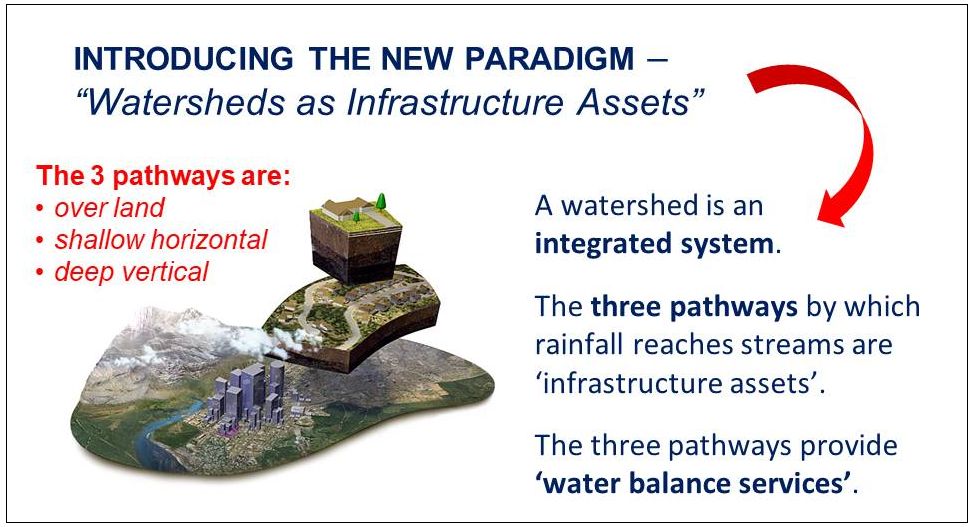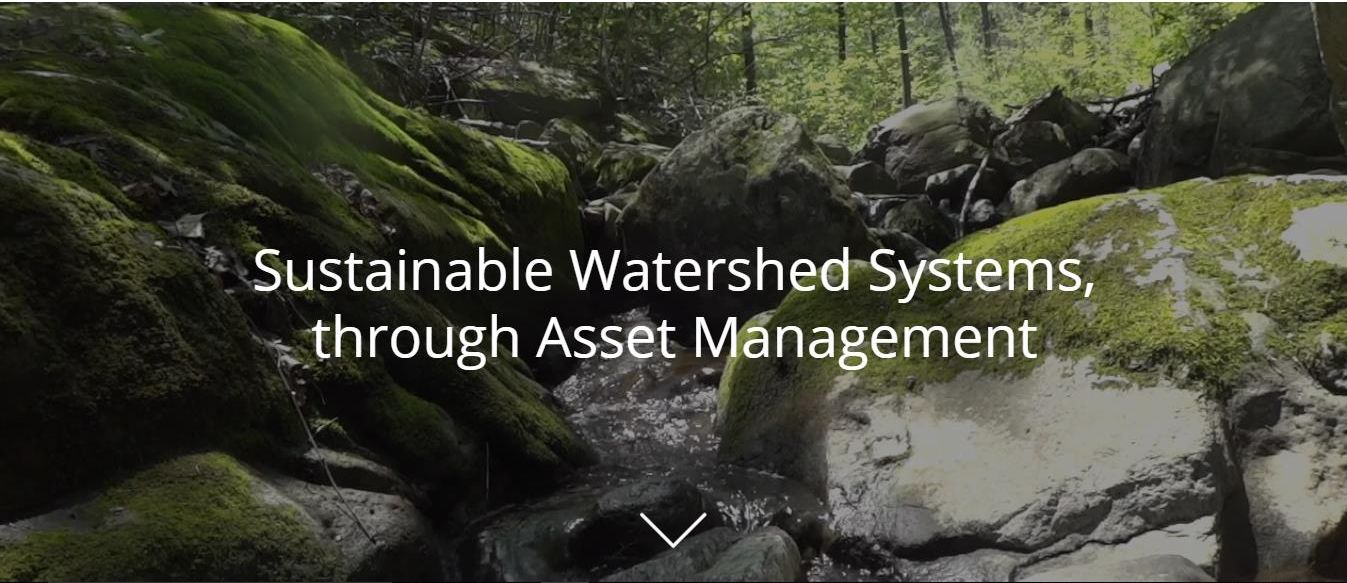YEAR IN REVIEW: “In 2017. the Partnership for Water Sustainability greatly enhanced the capabilities of the Water Balance family of tools to make real the vision for the ‘BC Framework’ for sustainable service delivery,” stated Ted van der Gulik, President, when reflecting on program accomplishments
Note to Reader:
No longer is asset management only about hard engineered assets – watermains, sewers, roads. Watershed systems are also “infrastructure assets”.
Already facing a $200 billion challenge for renewal of hard infrastructure, Asset Management for Sustainable Service Delivery: A BC Framework provides a financial driver for local governments in British Columbia to integrate a whole-system, water balance approach and climate adaptation into asset management.
The BC Framework sets a strategic direction that would refocus business processes on outcomes that reduce life-cycle costs and risks. Use less water. Mimic natural flows in streams. Preserve the natural pathways by which water reaches streams. Slow, spread and absorb runoff. Benefits include less flooding, less stream erosion, more streamflow when needed most.

Sustainable Watershed Systems, through Asset Management
Financial support from three levels of government makes it possible for the Partnership for Water Sustainability to develop tools, resources and programs. The collaborative process benefits all local government partners in British Columbia.
In 2017, membership fees supplemented by financial contributions from five regional districts allowed the Partnership to secure a substantial grant from the governments of Canada and British Columbia under the Clean Water & Wastewater Fund.
To Learn More:

Program Accomplishments
The outcome? The Partnership is spearheading an initiative branded as Sustainable Watershed Systems, through Asset Management. Under this program, the Partnership has in 2017:
Rebuilt both the waterbalance.ca and waterbucket.ca websites. The new look-and-feel for each is described as clean, crisp and contemporary.
Implemented the Water Balance Express Cost-Sharing Incentive Program. The goal is to double the number of applications from 5 to 10 by the end of 2018.
Proceeded with two demonstration applications of the Ecological Accounting Process (EAP) on Vancouver Island. The EAP whole-system view of watersheds assesses the hydrology in order to accurately describe the ecological services made possible by the hydrology.
Developed the Water Balance Model Desktop. This downloadable interface enables the expert user to better utilize the power of the QUALHYMO engine.
Continued to profile the ‘good work’ of its partners in the Watershed Case Profile Series. Over time, a goal of the Partnership is to celebrate the accomplishments of every one of its partners.
Undertaken a series of regional outreach and professional development events, starting with the Comox Valley Eco-Asset Symposium in March and concluding with the Blue Ecology Workshop in November (held in Richmond).
To Learn More:
Visit Water Balance Family of Tools + External Resources


